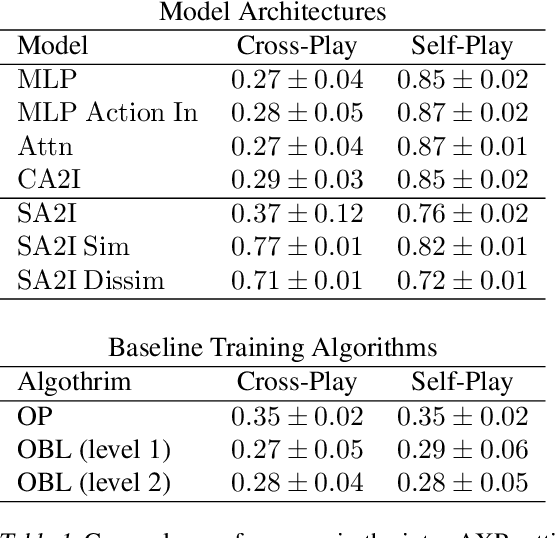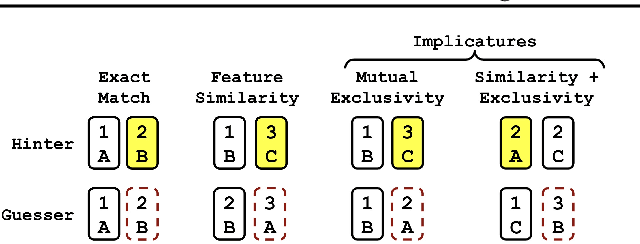Learning to Coordinate with Humans using Action Features
Paper and Code
Jan 29, 2022



An unaddressed challenge in human-AI coordination is to enable AI agents to exploit the semantic relationships between the features of actions and the features of observations. Humans take advantage of these relationships in highly intuitive ways. For instance, in the absence of a shared language, we might point to the object we desire or hold up our fingers to indicate how many objects we want. To address this challenge, we investigate the effect of network architecture on the propensity of learning algorithms to exploit these semantic relationships. Across a procedurally generated coordination task, we find that attention-based architectures that jointly process a featurized representation of observations and actions have a better inductive bias for zero-shot coordination. Through fine-grained evaluation and scenario analysis, we show that the resulting policies are human-interpretable. Moreover, such agents coordinate with people without training on any human data.
 Add to Chrome
Add to Chrome Add to Firefox
Add to Firefox Add to Edge
Add to Edge